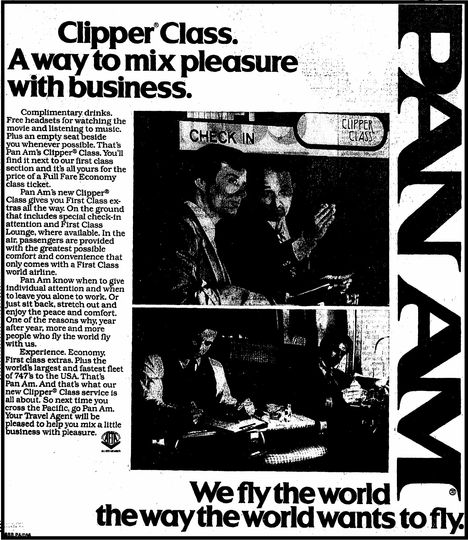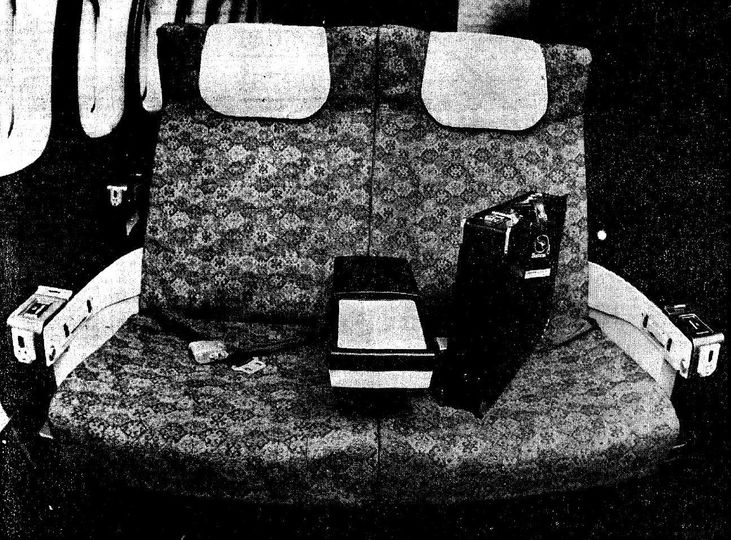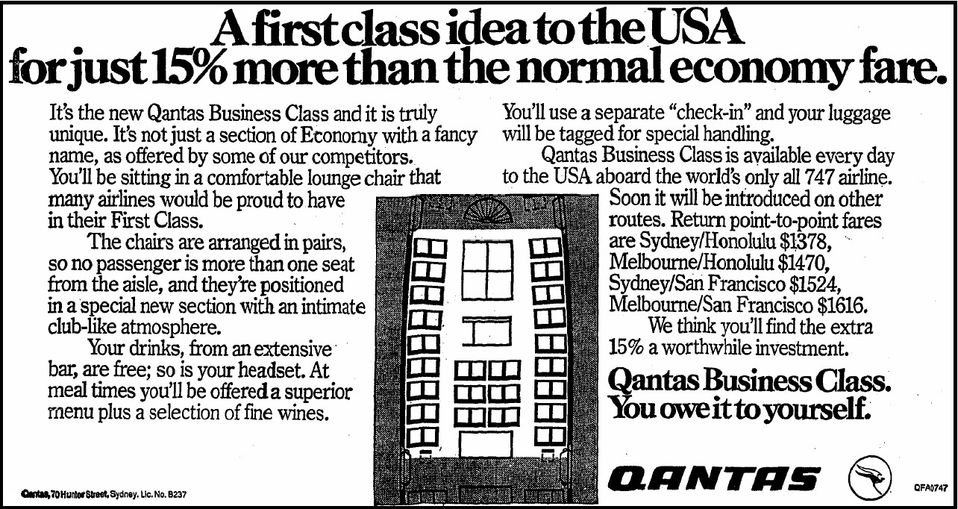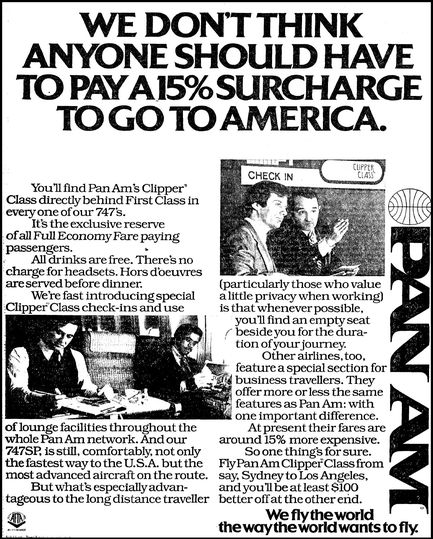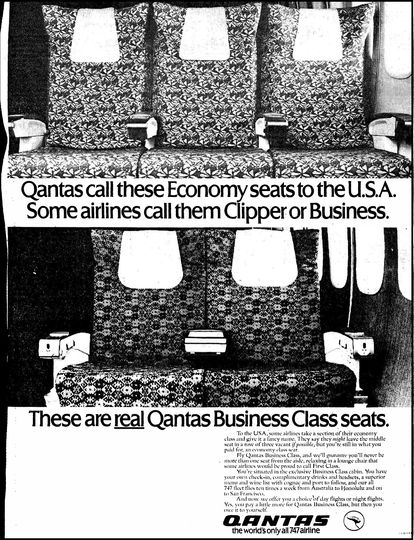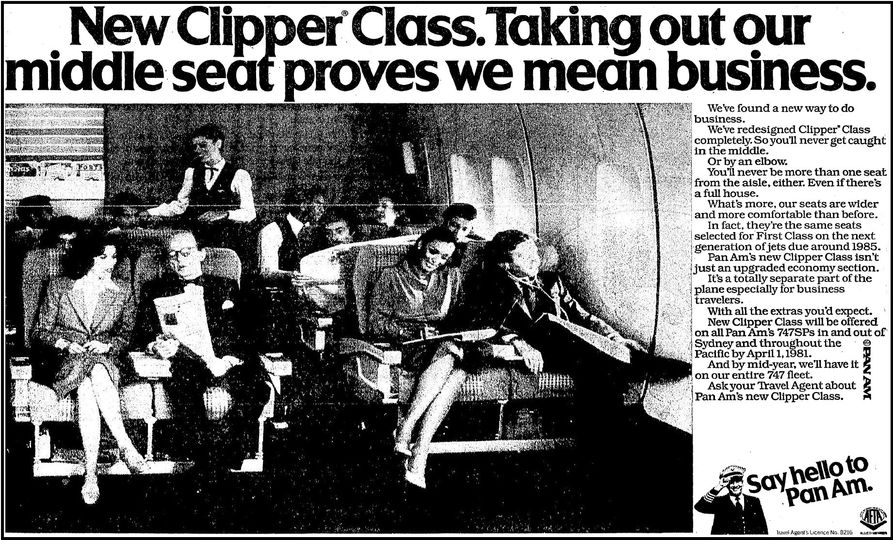Did Qantas really invent business class?
Qantas has long claimed to have created business class, but the real story is a little less clear-cut and much more fascinating.
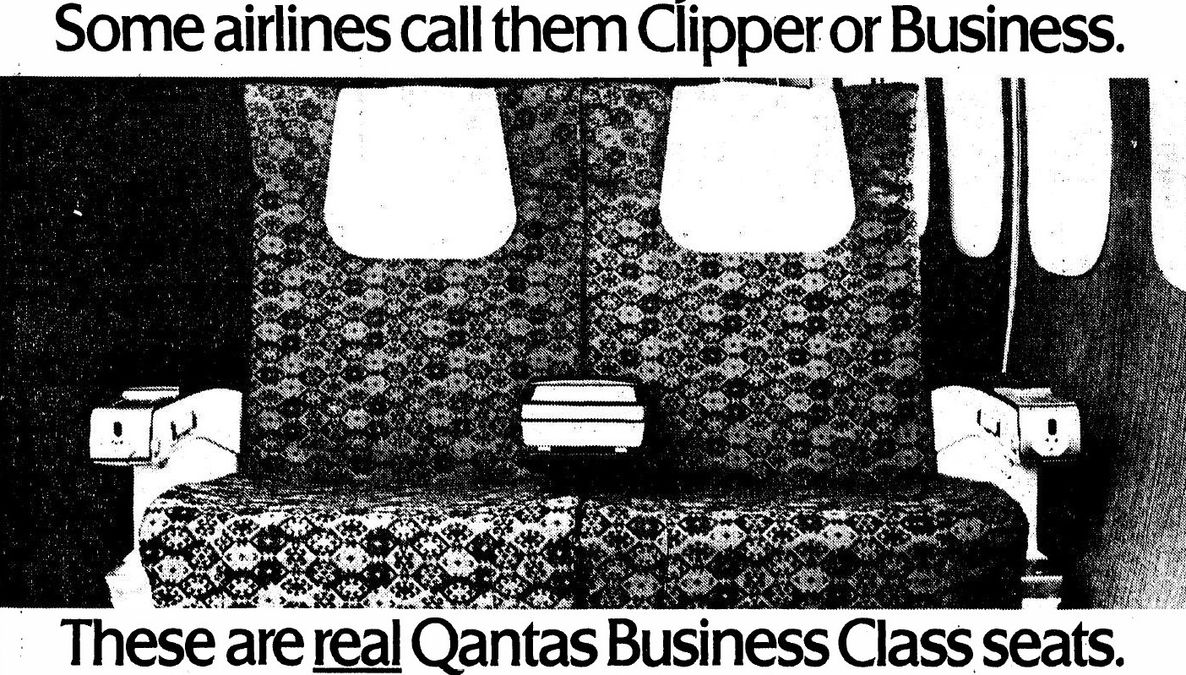
Spacious well-appointed business class seats and suites are taken for granted on most flights these days, and Qantas isn’t shy in trotting out the invention of business class as one of its credentials.
"Qantas changed long-haul flying with each new decade. In the 1970s, it invented business class," the airline’s website notes, while repeating the claim in its current inflight safety video.
The website also lists that in 1979, “Qantas introduced Business Class air travel, becoming the first airline in the world to do so”, with the concept taking wing on the flagship Boeing 747 fleet.
But was Qantas really the first airline with business class? We did a little digging to find out.
Before business class
In the early 1970s, international air travel meant wrapping yourself in first class luxury or settling for a long stint down the back in economy.
However, as the decade progressed, airlines began to realise there was a potentially lucrative gap between those classes and the experience we now know as business class began to take shape.
Pitched as being better than economy but without the sky-high price tag of first class – which many companies had already barred from their travel policies – business class achieved a better balance of comfort, convenience and price.
1975: Economy, with a little extra
As the decade rolled on, a number of global airlines began seating their highest-paying economy class passengers in a dedicated section of the plane.
Located at the front of the economy cabin, these travellers still flew in what were regular economy class seats, but with a few added extras to make the journey more comfortable.
Japan Airlines, for example, treated these flyers to airport lounge access in Tokyo, while KLM rolled out the red carpet at Amsterdam Schiphol Airport and New York JFK, offering priority check-in and priority baggage handling.
These would later become key benefits of the business class experience – but for now, this was just economy with some premium add-ons.
1977: ‘business class’ gets its name
Within two years, Thai Airways had not only adopted the same special seating zone for its higher-paying passengers, but had also given this section a new name: “business class”.
Seen here in an announcement in 1977, the airline refers to the experience as “a new class … for (businesspeople) and other passengers paying the full economy fare,” being “a closed off section between first and economy, with (fewer) seats and more room.”
The cabin is clearly described as “Thai’s Business Class”, also offering “the latest financial magazines and newspapers, a serve-yourself drinks bar, and the sort of food Thai (Airways) is famous for.”
Still, despite the ‘business class’ name, passengers were in what would otherwise be economy class seats.
1978: Pan Am debuts Clipper Class
With Air France and British Airways similarly creating a premium zone for higher-spending economy passengers, Pan American World Airways (better known as Pan Am) was next to unveil its own ‘in-between’ cabin, Clipper Class, in 1978.
Speaking with media at the time, Pan Am’s Managing Director for South-West Pacific, Michael Merlini, described the service as being “aimed at normal full fare economy passengers, including many business travellers”, while remaining priced at those full-fare economy levels.
Like other airlines, Clipper Class passengers were seated in a dedicated section of the plane – and offered premium extras like priority check-in, airport lounge access, “superior meals” and free drinks and headsets – but the seats here were still no better than those in regular economy.
Pan Am did promise Clipper Class passengers “an empty seat beside you, whenever possible,” but that was far from a guarantee: and on full flights, the comfort in Clipper Class would once again remain no better than in standard economy.
1979: Qantas launches its own business class
A year after Pan Am first announced Clipper Class, Qantas took the opportunity to roll out a “business class” of its own – but with a wider, more comfortable seat compared to economy class. This was, arguably, the creation of business class as we know it today.
In addition to the superior seat, Qantas promised its business class would offer those extras that travellers had come to expect elsewhere – priority ground service and lounge access, better food, free drinks and more.
For this added privilege, Qantas charges a 15% pricing premium over and above its full-fare economy ticket prices: positioning the product not as ‘the best way to fly economy’ as with other airlines, but in a completely new class of its own, with a price to match.
In fact, the concept was such a departure from what other airlines were doing at the time, that the US Government almost banned Qantas business class from its skies.
Wrongly believing that Qantas business class was, like so many others, offered in an economy-style seat, the US Civil Aeronautics Board recommended it be banned, because it thought Qantas’ 15% pricing premium was, in effect, a fare hike for economy passengers.
Qantas had to take its case to none other than US President Jimmy Carter, who did understand the concept, and gave the green light.
Cleared to fly, Qantas cranked up its marketing efforts to explain exactly what made Qantas business class different to the ‘business class’ of other airlines.
In this 1979 newspaper ad, Qantas boasts that “it’s not just a section of Economy with a fancy name, as offered by some of our competitors. You’ll be sitting in a comfortable lounge chair that many airlines would be proud to have in their First Class.”
It didn’t take long for rival Pan Am to hit back, highlighting that the value in its Clipper Class service was the lack of a “15% surcharge” on flights between Sydney and Los Angeles, in a clear swipe at Qantas.
The ‘advertising wars’ continued into the following year, with Qantas using visuals to illustrate why Clipper Class was more akin to economy, and why Qantas business class was different.
Hinting at Pan Am’s Clipper Class, the ad reads: “They say they might leave the middle seat in a row of three vacant if possible, but you’re still in what you paid for, an economy class seat. Fly Qantas Business Class, and we’ll guarantee you’ll never be more than one seat from the aisle.”
“Yes, you pay a little more for Qantas Business Class, but then you owe it to yourself,” the ad justifies.
The following year, Pan Am finally conceded the business class battle, taking on board Qantas’ concept of a more comfortable and spacious seat not otherwise found in economy: in effect, Clipper Class 2.0 became Pan Am’s first foray into true business class.
So: did Qantas really ‘invent business class’?
As history shows, Qantas was not the first airline to offer a ‘better than economy, but less than first class’ experience – nor was it the first airline to actually use the term “business class” (that trophy belongs to Thai Airways).
However, Qantas was the first to pull together the complete business class package as we know it today, by building on everything that had gone before it to create a rounded bundle of benefits both in the air and on the ground, which was priced and sold as a true ‘mid-tier’ cabin and travel experience nestled below first class but well ahead of economy.
Also read: How British Airways created the world's first lie-flat business class bed

